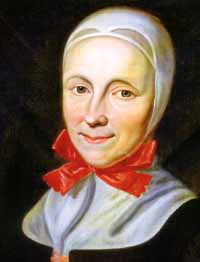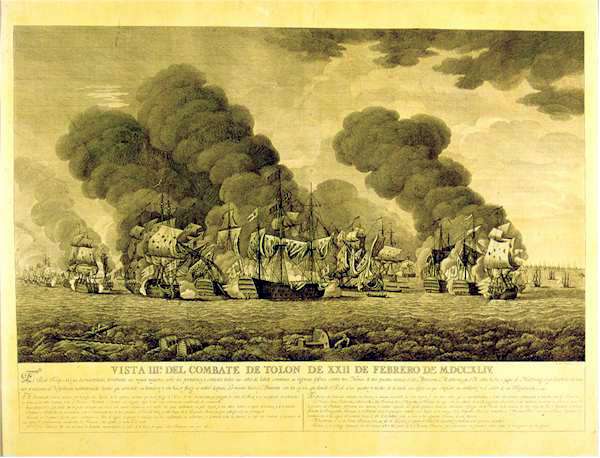|
Single Sisters' House (Bethlehem, Pennsylvania)
The Single Sisters’ House is an historic building located in Bethlehem, Pennsylvania constructed by the Moravian settlers as a Choir House for the Single Brethren in 1744, and is part of a larger building complex that also contains the 1741 Gemeinhaus, 1746 Bell House, and 1751 Old Chapel. As the community grew it was re-purposed for the Single Sisters’ Choir in 1748. A fine example of Colonial Germanic style architecture, a portion of the house is still used as apartments for single women in Bethlehem with the other portion used as a museum and programming space. The Single Sisters’ House is part of the Historic Moravian Bethlehem District The Historic Moravian Bethlehem Historic District encompasses a complex of the oldest surviving buildings in Bethlehem, Pennsylvania. The National Historic Landmark District is a subset of the larger Central Bethlehem Historic District which i ... which was designated as a National Historic Landmark District in 2012 and later name ... [...More Info...] [...Related Items...] OR: [Wikipedia] [Google] [Baidu] |
Bethlehem, Pennsylvania
Bethlehem is a city in Northampton and Lehigh Counties in the Lehigh Valley region of eastern Pennsylvania, United States. As of the 2020 census, Bethlehem had a total population of 75,781. Of this, 55,639 were in Northampton County and 19,343 were in Lehigh County. It is Pennsylvania's seventh most populous city. The city is located along the Lehigh River, a tributary of the Delaware River. Bethlehem lies in the center of the Lehigh Valley, a metropolitan region of with a population of 861,899 people as of the 2020 census that is Pennsylvania's third most populous metropolitan area and the 68th most populated metropolitan area in the U.S. Smaller than Allentown but larger than Easton, Bethlehem is the Lehigh Valley's second most populous city. Bethlehem borders Allentown to its west and is north of Philadelphia and west of New York City. There are four sections to the city: central Bethlehem, the south side, the east side, and the west side. Each of these secti ... [...More Info...] [...Related Items...] OR: [Wikipedia] [Google] [Baidu] |
Moravian Church
The Moravian Church ( cs, Moravská církev), or the Moravian Brethren, formally the (Latin: "Unity of the Brethren"), is one of the oldest Protestantism, Protestant Christian denomination, denominations in Christianity, dating back to the Bohemian Reformation of the 15th century and the History of the Moravian Church, Unity of the Brethren ( cs, Jednota bratrská, links=no) founded in the Kingdom of Bohemia, sixty years before Reformation, Luther's Reformation. The church's heritage can be traced to 1457 in Bohemian Crown territory, including its Lands of the Bohemian Crown, crown lands of Moravia and Silesia, which saw the emergence of the Hussite movement against several practices and doctrines of the Catholic Church. However, its name is derived from exiles who fled from Bohemia to Saxony in 1722 to escape the Counter-Reformation, establishing the Christian community of Herrnhut; hence it is also known in German language, German as the ("Unity of Brethren [of Herrnhut]"). T ... [...More Info...] [...Related Items...] OR: [Wikipedia] [Google] [Baidu] |
Lewis David De Schweinitz Residence
The Moravian Museum of Bethlehem, also known as the 1741 Gemeinhaus and the Lewis David de Schweinitz Residence, is a historic house museum at 66 West Church Street in Bethlehem, Pennsylvania. Built in 1741 to house the early Moravian community as well as the community's place of worship, the ''Saal'', it is the oldest surviving building in Bethlehem, the largest surviving log house in continuous use in the U.S. and also significant for its association with the botanist and mycologist Lewis David de Schweinitz (1780–1834). It was declared a National Historic Landmark in 1975. The building is part of the Historic Moravian Bethlehem District which was designated as a National Historic Landmark District in 2012 and later named to the U.S. Tentative List in 2016 for nomination to the World Heritage List. Description and history The former Moravian Gemeinhaus (meaning ''Community House'') is located in the historic heart of Bethlehem, at the northeast corner of West Church Street ... [...More Info...] [...Related Items...] OR: [Wikipedia] [Google] [Baidu] |
Historic Moravian Bethlehem District
The Historic Moravian Bethlehem Historic District encompasses a complex of the oldest surviving buildings in Bethlehem, Pennsylvania. The National Historic Landmark District is a subset of the larger Central Bethlehem Historic District which is specifically focused on the early buildings constructed by the Moravians, who settled the city in the 18th century. The district was designated a National Historic Landmark in 2012 for its historical assemblage of communal religious buildings and history. In 2016, it was named to the U.S. Tentative List for nomination to the World Heritage List. Description and history The Historic Moravian Bethlehem Historic District occupies a discontiguous area of central Bethlehem. Its central core consists of the Moravian Museum of Bethlehem and adjacent properties, located at Main and West Church Streets east of Monocacy Creek, which is a tributary of the Lehigh River in Northampton County. The museum property includes a connected serie ... [...More Info...] [...Related Items...] OR: [Wikipedia] [Google] [Baidu] |
National Historic Landmark
A National Historic Landmark (NHL) is a building, district, object, site, or structure that is officially recognized by the United States government for its outstanding historical significance. Only some 2,500 (~3%) of over 90,000 places listed on the country's National Register of Historic Places are recognized as National Historic Landmarks. A National Historic Landmark District may include contributing properties that are buildings, structures, sites or objects, and it may include non-contributing properties. Contributing properties may or may not also be separately listed. Creation of the program Prior to 1935, efforts to preserve cultural heritage of national importance were made by piecemeal efforts of the United States Congress. In 1935, Congress passed the Historic Sites Act, which authorized the Interior Secretary authority to formally record and organize historic properties, and to designate properties as having "national historical significance", and gave the Nation ... [...More Info...] [...Related Items...] OR: [Wikipedia] [Google] [Baidu] |
World Heritage Site
A World Heritage Site is a landmark or area with legal protection by an international convention administered by the United Nations Educational, Scientific and Cultural Organization (UNESCO). World Heritage Sites are designated by UNESCO for having cultural, historical, scientific or other form of significance. The sites are judged to contain " cultural and natural heritage around the world considered to be of outstanding value to humanity". To be selected, a World Heritage Site must be a somehow unique landmark which is geographically and historically identifiable and has special cultural or physical significance. For example, World Heritage Sites might be ancient ruins or historical structures, buildings, cities, deserts, forests, islands, lakes, monuments, mountains, or wilderness areas. A World Heritage Site may signify a remarkable accomplishment of humanity, and serve as evidence of our intellectual history on the planet, or it might be a place of great natural beauty. A ... [...More Info...] [...Related Items...] OR: [Wikipedia] [Google] [Baidu] |
Collegium Musicum
The Collegium Musicum was one of several types of musical societies that arose in German and German-Swiss cities and towns during the Reformation and thrived into the mid-18th century. Generally, while societies such as the (chorale) cultivated vocal music for church performance and the convivium musicum discussed musical philosophy over a banquet, the collegia musica performed both vocal and instrumental music for pleasure; they focused on instrumental music as it rose in stature during the Baroque era. Though closed amateur societies in concept, collegia frequently included professionals to fill out the music and admitted non-members to performances. Moreover, they often provided music for church, state, and academic occasions and gained the patronage of leading citizens. From the 1660s, their functions largely constituted the beginnings of public concert life in Germany. Leipzig Leipzig collegia musica, consisting mostly of university students, enjoyed a succession of part ... [...More Info...] [...Related Items...] OR: [Wikipedia] [Google] [Baidu] |
Anna Nitschmann
Anna Caritas Nitschmann, Countess von Zinzendorf und Pottendorf, (24 November 1715, Kunín, Moravia – 21 May 1760, Herrnhut, Lusatia) was a Moravian Brethren missionary (''Missionarin''), lyrical poet, and the second wife of Count Nicolaus Ludwig Zinzendorf. By virtue of her marriage, she became a member of the House of Zinzendorf, one of the most prominent noble families in the region. Biography Born as the younger daughter of David Nitschmann (1676-1758) and his wife, Anna Schneider (1680-1735), she served as the Chief Eldress of the Renewed Moravian Church for most of her life, from the age of 14. Her duties as Chief Eldress were to serve as a spiritual mentor and counsellor to the female members of the congregations. Most of her life was spent in close connection with the Zinzendorf household, although a couple of years were spent doing itinerant mission work among the women of southeastern Pennsylvania. She then returned to Europe to resume her work among t ... [...More Info...] [...Related Items...] OR: [Wikipedia] [Google] [Baidu] |
1744 Establishments In Pennsylvania
Events January–March * January 6 – The Royal Navy ship ''Bacchus'' engages the Spanish Navy privateer ''Begona'', and sinks it; 90 of the 120 Spanish sailors die, but 30 of the crew are rescued. * January 24 – The Dagohoy rebellion in the Philippines begins, with the killing of Father Giuseppe Lamberti. * February – Violent storms frustrate a planned French invasion of Britain. * February 22– 23 – Battle of Toulon: The British fleet is defeated by a joint Franco-Spanish fleet. * March 1 (approximately) – The Great Comet of 1744, one of the brightest ever seen, reaches perihelion. * March 13 – The British ship ''Betty'' capsizes and sinks off of the Gold Coast (modern-day Ghana) near Anomabu. More than 200 people on board die, although there are a few survivors. * March 15 – France declares war on Great Britain. April–June * April – ''The Female Spectator'' (a monthly) is founded by Eliza Haywood in ... [...More Info...] [...Related Items...] OR: [Wikipedia] [Google] [Baidu] |
Religious Buildings And Structures Completed In 1744
Religion is usually defined as a social- cultural system of designated behaviors and practices, morals, beliefs, worldviews, texts, sanctified places, prophecies, ethics, or organizations, that generally relates humanity to supernatural, transcendental, and spiritual elements; however, there is no scholarly consensus over what precisely constitutes a religion. Different religions may or may not contain various elements ranging from the divine, sacred things, faith,Tillich, P. (1957) ''Dynamics of faith''. Harper Perennial; (p. 1). a supernatural being or supernatural beings or "some sort of ultimacy and transcendence that will provide norms and power for the rest of life". Religious practices may include rituals, sermons, commemoration or veneration (of deities or saints), sacrifices, festivals, feasts, trances, initiations, funerary services, matrimonial services, meditation, prayer, music, art, dance, public service, or other aspects of human culture ... [...More Info...] [...Related Items...] OR: [Wikipedia] [Google] [Baidu] |
.jpg)





